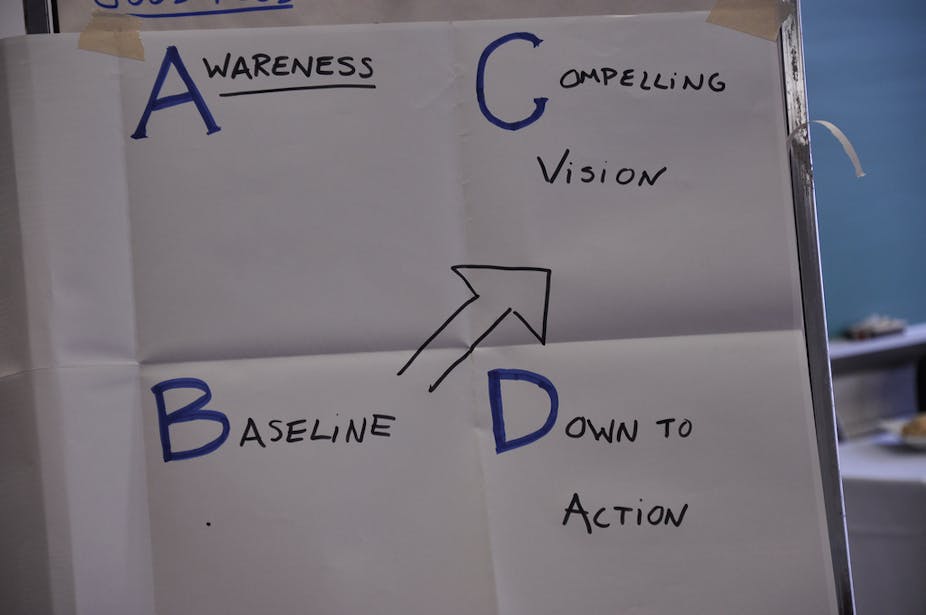Everyone loves sustainable development. While we’re building and planning to improve our quality of life, why not balance and integrate the social, economic, and environmental issues? Hard to imagine that anyone could be against it.
Politicians certainly find it attractive. The various conferences – Rio, South Africa, soon to be Rio again – show that the concept of sustainable development still has legs and something to offer. Ban Ki-Moon, UN secretary General, has been quoted as saying sustainable development is the agenda of the 21st century (though I have little doubt that the same was said in the run up to the original Earth Summit in 1992).
A chance missed
It’s because sustainable development is such an attractive concept that everyone is prepared to talk about its virtues. But precious few actually seem to know what it looks like.
I’ve spent many years working in government – in the UK and Australia – hopeful of seeing signs of a move towards sustainable development.
Back in 1999 I was responsible for writing the UK Government’s first annual report on progress towards sustainable development. The key argument within Government as it prepared the report was whether it would be a commentary on the past or a discussion about how government policy would affect people’s future quality of life (as represented by 15 headline indicators of sustainable development).
Sadly the argument was lost and the report – now in the national archive – spoke about the past rather than the future. This was really disappointing: the chance to mainstream sustainable development in government was lost.
It could have been great – we could have made sustainable development an integral part of policy making. But globally the excitement that existed waned. The commitment to sustainable development was – and is - still there in the rhetoric and was even given a nod in policy development and delivery, but it became increasingly marginalised. The language around sustainable development became hijacked to give a useful gloss to almost any policy decision.
There’s no single reason why governments collectively lost interest in sustainable development, but increasingly I think it’s a mixture of the following reasons.
Governments struggle to define what “good” looks like
It is clear that achieving sustainable development goes wider than government action. Government can manage the end results of some policies, but not all. For example, government can promote good health but people still smoke, eat junk food and become inactive. It can ban murder but people still kill.

Governments know this and increasingly focus on those issues that have boundaries and can be managed; where success or failure is clear, and clearly attributable.
Climate change might have been seen as such an issue. After all, if we care about evidence-based policy making the evidence was there; society was concerned; we know the price of inaction. We know what good (falling emissions) and bad (rising emissions) look like. The stars seemed to be in alignment. But as we are discovering, evidence-based policy with poor delivery is not good politics.
It’s really difficult to get consensus on priorities and time frames
All bits of society need to be engaged, somehow work together to agree what the future should look like, and then work to deliver that future. Failure to do this means that the focus of policy and decision making won’t be securing a sustainable future, but making a society that is slightly less unsustainable.
Unless you can get consensus, there is no clarity about what a sustainable future looks like. It looks like whatever you, or I, or our politicians think it should look like. Crucially, we coalesce around solutions that fit with our view of life and our view of time. I think about me; you may think about your kids; him over there – he may be more altruistic – and think about all the kids and grandkids in his community.
Let’s be clear: we are all the same. We care about improving our quality of life as we see it. But we all have different views about the time frames that encircle our decision making. Sustainable development doesn’t: it is blind when it comes to time. There is simply no question: sustainable development requires that we think about generations to come. It requires that decisions we take or policies we announce today take into account the effects on tomorrow’s generations.
Time to lead
But does this help at all?
It does and it doesn’t. Setting time frames for decision making is really important. But it still hasn’t helped define what a sustainable future might look like – let alone motivate society to take the decisions to move to a sustainable future.
Governments collectively and individually have a fundamentally important role in facilitating progress towards a sustainable future. Governments need to show leadership – where they tread society will follow.
I have no doubt that this will continue to be a long, slow, but worthwhile journey. We need to make sure that individual projects or policies effectively integrate and balance environmental, social and economic factors into decision making – it needs to be done continuously, in each place and in each year.
Now that would be progress.

